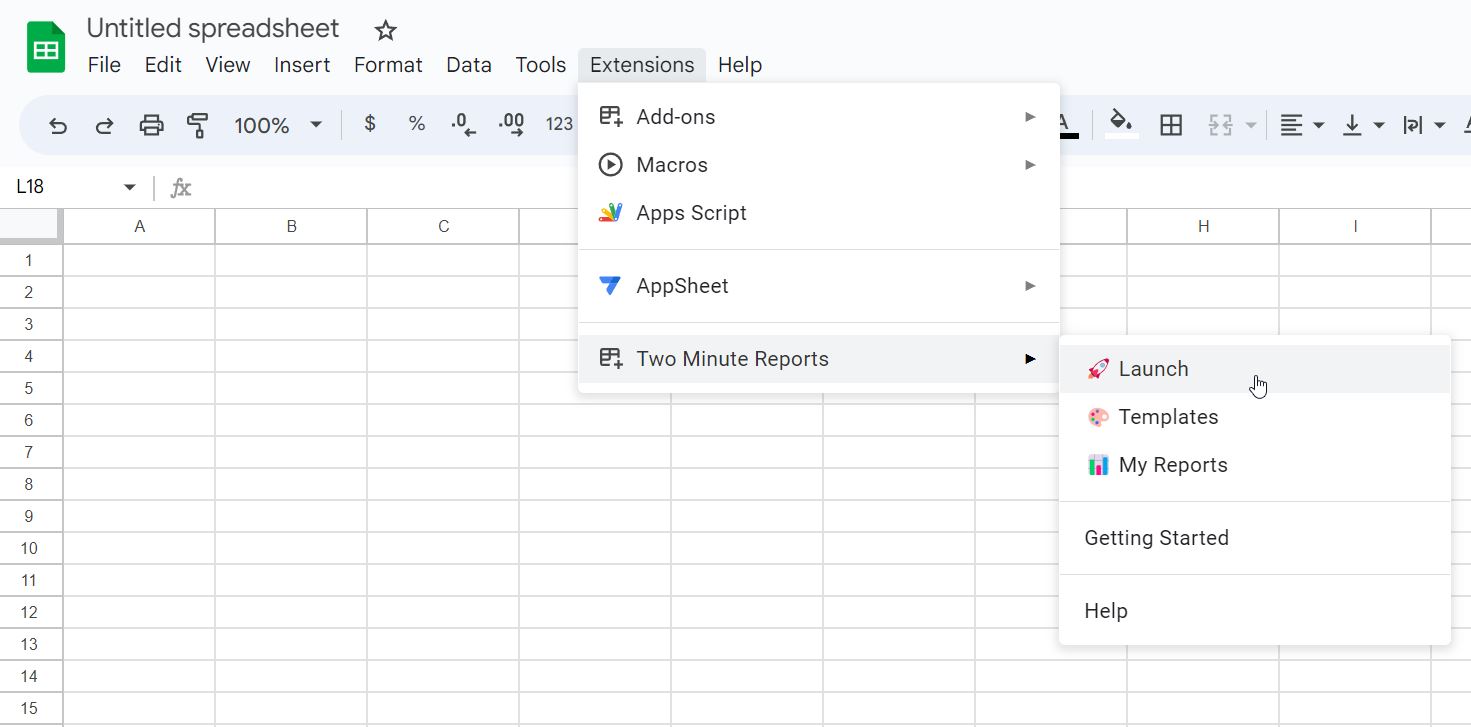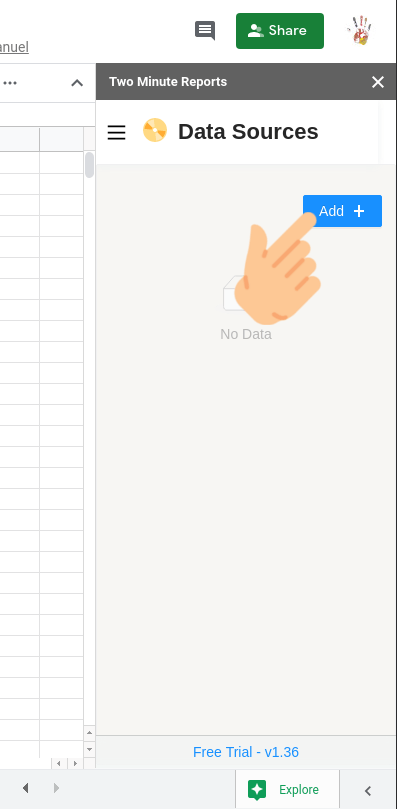Creating Facebook Ads reports is tedious and time-consuming. Let’s face it – if your campaign has been running for a month or more without results, then it may be time to re-evaluate exactly what you’re doing.
Each campaign is different, we’ll show you a step-by-step guide of how we build our comprehensive Facebook Ads report to analyse what’s going on with your current (or past) campaigns.
Without writing a single line of code you can automatically pull the latest data from Facebook Ads to Google Sheets. All this without sacrificing data security, with our encrypted Google setup and data stored in your private Google Sheet, you can be confident that you are safe. Let me show you how.
If you want something quick, here is a video to help you through the entire setup process
Step 1: Install and Launch Two Minute Reports
Install Two Minute Reports, if you have not done already.
Sign in to any Google Sheet and go to Add-ons -> Get add-ons.

Search for Two Minute Reports and select Install.

Review and accept the permissions necessary to run Two Minute Reports. Two Minute Reports will be installed for you with the e-mail you are sign in to Google Sheets.
Open Google Sheets and go to Extensions -> Two Minute Reports -> Launch.
Step 2: Connect Facebook Ads to Google Sheets
- Go to the Data Sources section
- Select Facebook Ads from the drop-down
- Click Login with Facebook and add your Facebook Ad account as one of the data sources

Step 3: Getting Facebook Ads data in Google Sheets
To pull Facebook Ads performance data you start by creating a new query by navigating to Data Queries and clicking on Add new.
A query form will be displayed where you can name your query and select the newly created Facebook Ads Data Source from Step 2. Select the sheet and cell location for saving the data onto Google sheet.
You can then freely select the metrics and dimensions you need for your Facebook Ad Campaigns.
There are more than 100+ metrics and dimension for you to choose from to analyse whats going on with your Campaigns. Now, we’d just select Clicks, Reach, Impressions, Date, Ad Name and Campaign name in the metrics/dimensions fields.
You can also select different attribution/conversion window settings, to configure how want to report your conversions in Facebook.
Once you are happy with the configuration you can press run Query.
Now you can use different Google Sheets features like Pivot Table, VLOOKUP(), charts to create and customize your custom report.
Once a report is created you can create a Schedule in Google Sheets to automatically update your sheets and keep your data up-to-date. This feature is handy to send emails, or just refresh your spreadsheets with live data and use it as a Dashboard.
Step 4: (Optional) Schedule Automatic data Refresh and email
Once you have fetched data once, you might want to get new data from your database at periodic intervals. You can do this creating a new schedule under the “Schedule Reports” section. You can schedule updates hourly, daily, weekly or monthly based on your needs.
You could also create a report and ask Two Minute Reports to email that report with updated data automatically. Under the email section enter the email Id of the recipients and save your new schedule.
When the time comes, Two Minute Reports will automatically fetch new data from your queries, and email your report to the said recipients. You have freed a lot of your time from mundane reporting tasks.
There are other features with Two Minute Report’s schedule refresh or data refresh feature. You may read our guide How to Refresh Data Automatically in Google Sheets.








